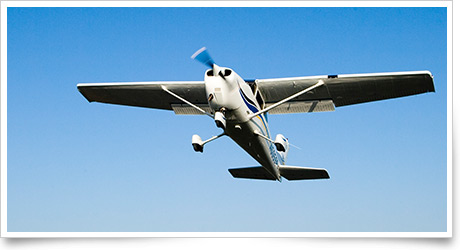Custom content for the Feb. 12, 2012, issue of 'AOPA ePilot' newsletter
| The following stories from the Feb. 24, 2012, edition of AOPA ePilot were provided to AOPA members who expressed an interest in the particular subject areas. Any AOPA member can receive information tailored to their areas of interest by updating their preferences online |
training tipsMush on the menu A glance at the altimeter brings more aggravation: 150 feet of altitude have slipped. When did that happen? Back at the airport, another dilemma is developing. A student pilot is landing a trainer, but has flared too high. The stall horn sounds, and the student adds some power to cushion the touchdown. But the remedy isn't enough, and the trainer flops to earth with a resigned clunk. Two different problems—but both with the same cause: The pilots failed to recognize that their aircraft had entered an aerodynamic twilight zone referred to as mushing flight. When practicing minimum controllable airspeed and the various stall recoveries, one of the most important lessons of the exercises is recognizing the various ways your aircraft communicates its aerodynamic condition. For example, not all stall entries are given away by an aural warning, buffeting, or a pronounced downward-pitching of the nose referred to as a stall break. If the critical angle of attack sneaks up on you with more stealth than is typically allowed during practice sessions, aircraft responsiveness to control pressures or power changes may deteriorate without big changes in aircraft attitude. That leaves the aircraft in the mushing condition that frequently leads to hard landings or altitude loss during slow-flight drills. You can recognize mushing flight by some specific cues. One is being unable to arrest a creeping descent while trying to hold a constant altitude during low airspeed flight. Another is a continued descent toward (or onto) the runway after you try to flare for landing. (A dissipating headwind component can also cause the problem.) Mushing poses the most danger if an aircraft on final approach is allowed to fly too deep onto the "back side of the power curve," where rapidly building induced drag could cause a stall/mush well above the ground. Similar risk could be encountered during a go-around, as this accident illustrates. A pilot who recognizes the early signs of decaying control effectiveness will avoid mushing or a stall. Drills that are safely focused on recognition of the condition are highly recommended! training productsCessna flight simulator controlsPilots who enjoy brushing up on their skills at home with a flight simulator can take it to the next level with a set of flight simulator controls. Sporty’s offers a special package of all three Cessna control systems—yoke, rudder, and trim wheel—plus Microsoft Flight Simulator X Gold edition, bundled together for $469.95, or you can purchase the items separately. See the website or call 800/776-7897.
Note: Products listed have not been evaluated by ePilot editors unless otherwise noted. AOPA assumes no responsibility for products or services listed or for claims or actions by manufacturers or vendors. final examQuestion: The other day I heard something about military training routes (MTRs) called SR routes. I am not familiar with them. Can you explain?
Answer: The MTR program is a joint venture by the FAA and the Department of Defense. Most of us are familiar with IFR (IR) military training routes and VFR (VR) military training routes. However, not much is said about slow speed military training routes, or SR routes. These routes are also not depicted on VFR sectional charts, which perhaps makes them more of a mystery. They are published, but only in the Department of Defense's Flight Information Publication (FLIP). They are not found on sectional charts because military pilots flying these routes must adhere to visual flight rules like the rest of us. The ceiling must be at least 1,500 feet agl and visibility three miles or greater with a maximum airspeed of 250 knots. Normally these routes are flown at 300 to 500 feet agl during the day, except around environmental or noise sensitive areas where the altitudes are increased. If you are curious about whether there are any SR routes near you, ask a flight service briefer. You can also get your own copy of the FLIP by contacting the FAA’s Aeronautical Navigation Products (AeroNav) Logistics Group in Glenn Dale, Md. So see and avoid; there might be an A-10 Warthog or a C-130 Hercules roaming the treetops in your area.
Got a question for our technical services staff? E-mail [email protected] or call the Pilot Information Center, 800/872-2672. Don’t forget the online archive of “Final Exam” questions and answers, searchable by keyword or topic. |
 A trainer is wallowing through the air at minimum controllable airspeed, its pilot struggling to maintain heading and altitude as induced drag and unresponsive controls work mischief on the exercise.
A trainer is wallowing through the air at minimum controllable airspeed, its pilot struggling to maintain heading and altitude as induced drag and unresponsive controls work mischief on the exercise.

